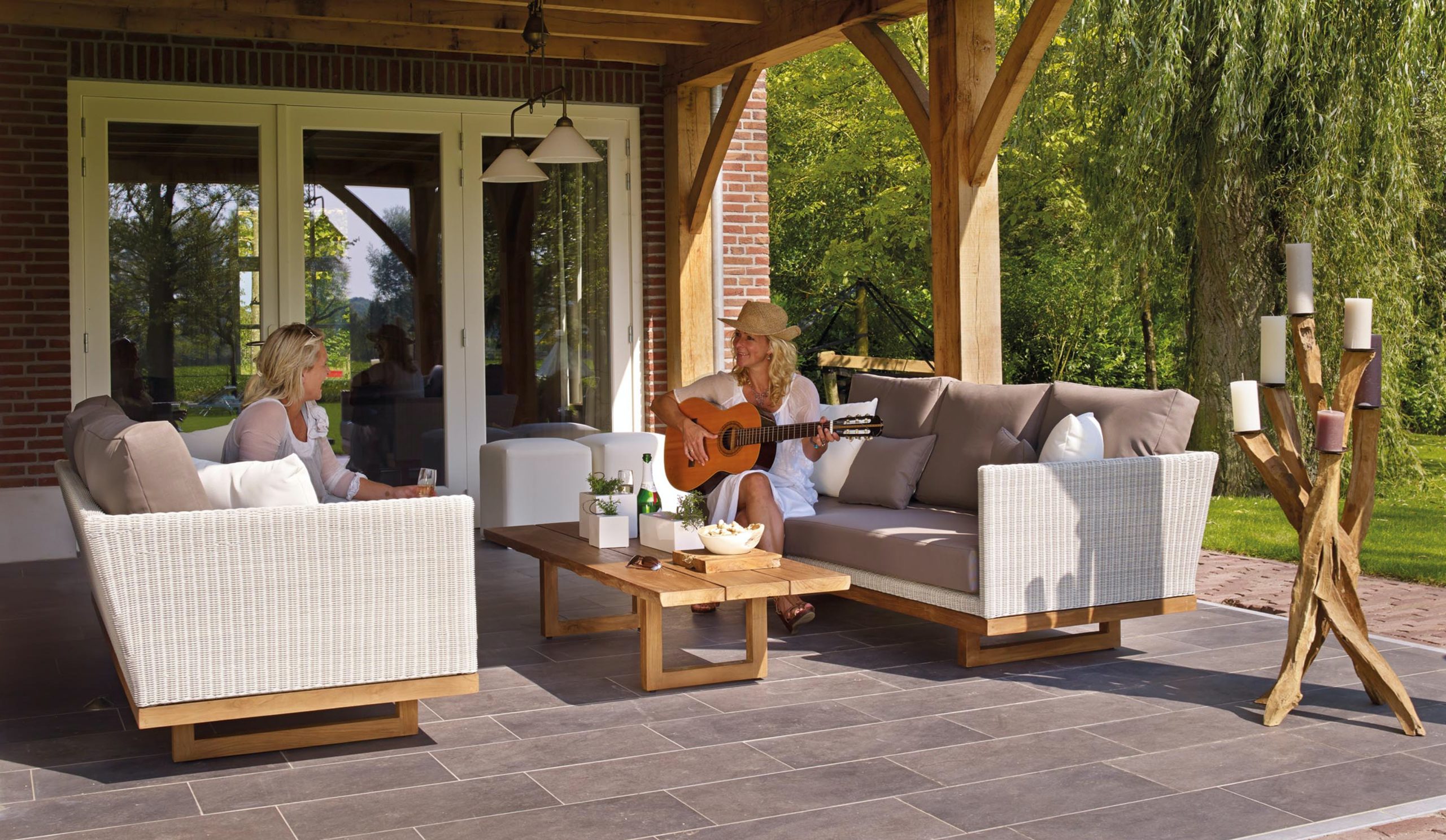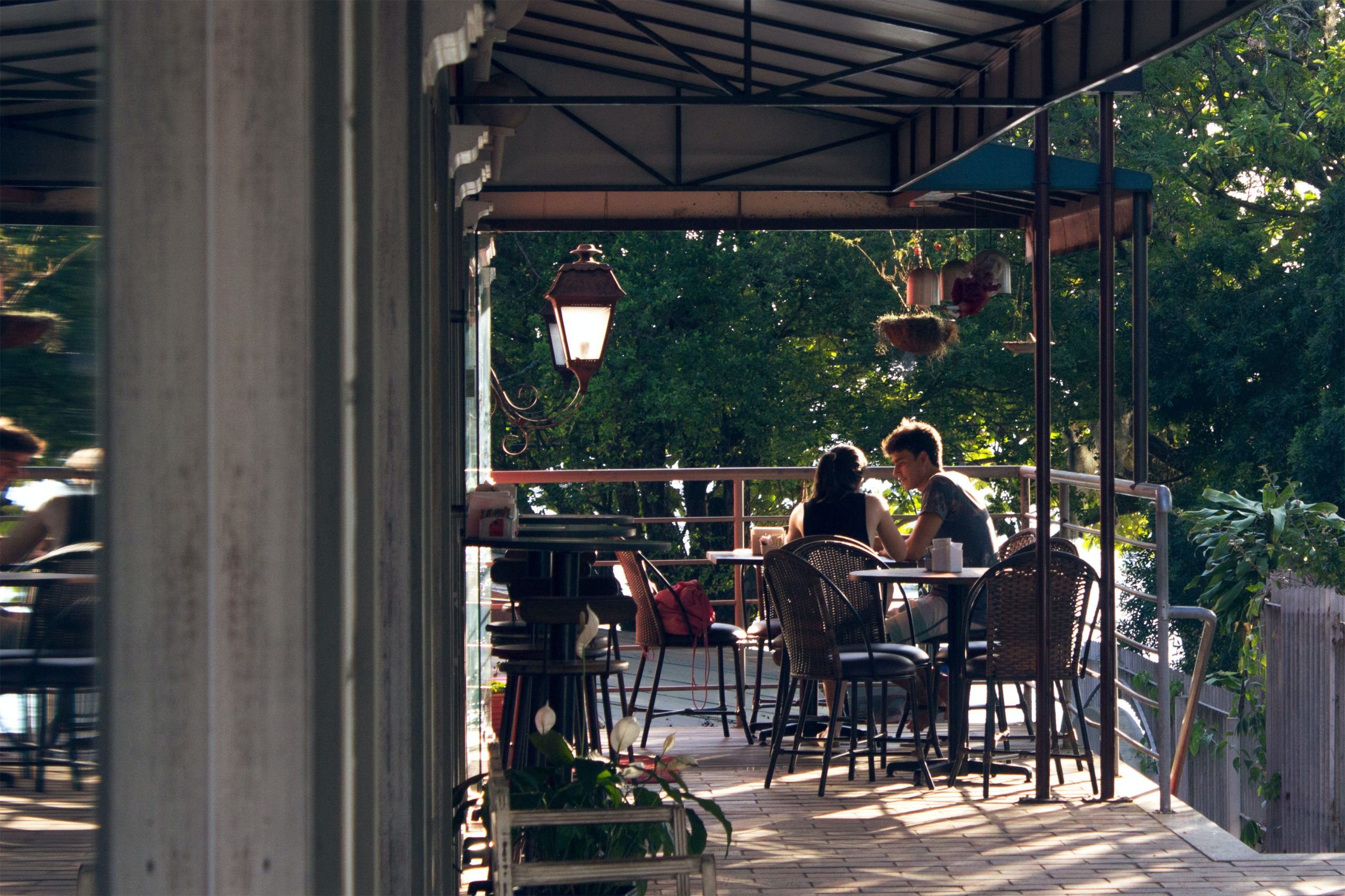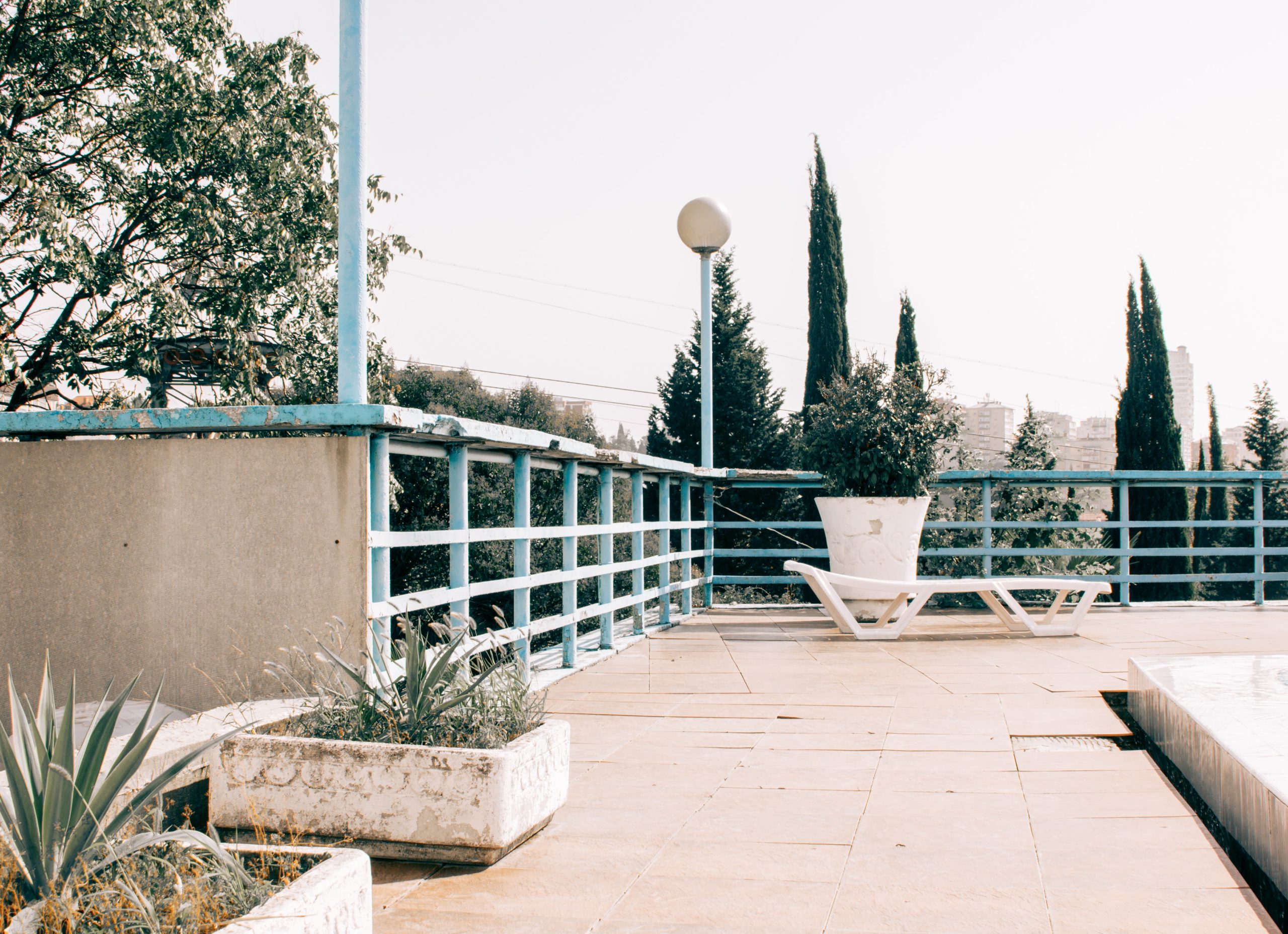Patio season is right around the corner. So, what kind of shape are your outdoor tiles in?
Dingy, dirty, or damaged tiles can be distracting (at the least) and dangerous (at the worst). From weekend barbecues to lazy afternoons in the yard, having clean and fresh patio tiles is key to truly being able to relax and enjoy the outdoor season.
Here, we explain how to tell whether your tiles need to be replaced and talk through some of the top outdoor floor tile options and materials, to help you create the perfect backyard sanctuary for spring and summer.
Clean or replace? Assessing your patio tiles
Your patio tiles might look like a lost cause, but that doesn’t necessarily mean they’re done for. Sometimes, a comprehensive deep clean is all you need to refresh outdoor tiles to their former glory.
If your grout is crumbling or disintegrating, replacing it can also restore your space and make your patio look brand-new again.
Professional cleaners will soak, scrub, and rinse your patio with specialty equipment. We also offer grout restoration and resealing in cases where your patio needs a bit more of an overhaul.
If several of your tiles are cracked or damaged, or you notice large stains that refuse to come out even after a professional cleaning service, new patio tiles may be a better and more sustainable option.
The benefits of outdoor tiles

There are many reasons outdoor tiles are a great option for styling your patio adding to your landscape:
- Durable: Depending on the material you choose and the climate you live in, they can last for decades.
- Easy maintenance: It’s easy to integrate outdoor tile cleaning into your routine – sweep and rinse them every 1-2 weeks and get them professionally cleaned once a year.
- Design: With endless design options, you can create a scene that suits your aesthetic and lifestyle.
Choosing outdoor tiles

When choosing patio tiles, there are a few things to consider. Ask yourself (or the sales rep) these questions when picking your outdoor flooring.
Strength: Do you need tiles that can withstand a lot of activity? Or will you be using your outdoor patio primarily for low-key lounging?
Conditions: Are you in a hot, cold, or changeable climate? What about light exposure? How will different materials hold up against the weather conditions in your area?
Budget: Are you tiling a small area, or do you have a lot of ground to cover? Are you splurging on your reno or looking for a budget-friendly option?
Style: Which materials best match the aesthetic you’re going for?
Safety: Are ultra-non-slip tiles a big priority for you? Will your tiles be placed around a pool? Do you have kids or pets that will be running around in the yard?
Types of patio tiles

Once you’ve figured out some answers to the questions above, you can begin narrowing down which patio tile materials best suit your requirements.
There are many different outdoor floor tile options to suit every preference and price-point.
Granite patio tiles
- Natural stone
- One the hardest and most durable options
- Hold up well in climates that experience significant seasonal shifts from hot to cold weather
- Big color selection, most popular finishes are in black, grey, and white
- Because they’re natural stone, they can be slippery and need to be sealed regularly – choose a textured option rather than a smooth finish
- Tend to a more expensive option
Slate patio tiles
- Natural stone
- Very hard and durable
- Hold up well in seasonal climates, known for being very water resistant
- Come in a variety of unique colors, most popular in earthy tones
- Tend to a more expensive option
Limestone patio tiles
- Natural stone
- Softer material that can be easier to chip or scratch
- Better suited to dry, warm climate as they can crack in cold weather
- Must be sealed regularly to maintain quality
- Typically available in light, earthy colors
- Tend to be a mid-price option
Travertine patio tiles
- Natural stone
- Variety of limestone that’s even softer, meaning they can be vulnerable to cracks, scratches, or stains
- Better suited to dry, warm climate
- Pitted, porous surface that can collect dirt
- Must be sealed regularly to maintain quality
- Available in a beautiful variety of brown, beige, and cream colors
- Tend to be a mid-price option
Porcelain outdoor tiles
- Clay-based
- Durable, strong, and sun-resistant
- Able to withstand changing weather and won’t fade
- Can be slippery – be sure to choose outdoor-specific porcelain with a matte finish and slip resistance
- Tend to be a more affordable option
Quarry patio tiles
- Clay-based
- Durable and strong in most conditions
- Not ideal for freezing temperatures
- Can be susceptible to stains
- Available in natural, earthy colors
- Tend to be a more affordable option
Soapstone patio tiles
- Natural stone
- Durable, resistant to water, staining and heat
- A good option for seasonal climates that experience both hot and cold, wet weather
- Available in a variety of tonal finishes, most popularin dark grey and black
- Tend to a more expensive option
Sandstone patio tiles
- Natural stone
- Softer and need regular sealing
- Better suited to dry climates
- Available in many beautiful finishes and textures, most popular in warm, sandy colours
- Tend to be a mid-price option
Concrete patio tiles
- Humanmade concrete
- Highly durable and strong
- Suitable for all climates, including hot and cold, wet weather
- Huge variety of color options that can resemble natural stone or ceramic tiles
- Tend to be a more affordable
Wood tiles
- Hardwoods
- Also called decking tiles
- Can be finished to be insect and fire-resistant but require regular power-washing and treatment with finisher
- Available in a variety of tones and textures
- Tend to be a more affordable option
Caring for your outdoor floor tiles

Once you’ve spiffed up or sprung for new patio tiles, be sure to take good care of them to maintain their quality over the long term.
- Sweep and rinse them every couple of weeks to prevent dirt and mildew from building up.
- Aim to give them a comprehensive cleaning with appropriate tile cleaning products at least once a season.
- Call in the pros once a year
Check out our step-by-step guide to learn more about how to clean patio tiles. If you’re ready for patio season to begin, give us a call to request a quote.

